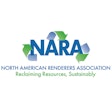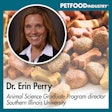Companion animal researchers and industry professionals gathered recently at the annual American Society of Animal Science meeting in San Antonio, Texas, USA, for research presentations/posters and a companion animal symposium entitled "Ingredients as nutrient delivery devices." Here are highlights from the symposium.
Research limitations
Dr. George Fahey Jr. of the University of Illinois provided a comprehensive overview of the methodologies available to companion animal researchers. As part of his conclusions he emphasized two main limitations.
The first, while not addressing a method in and of itself, is the lack of a comprehensive, accurate, up-to-date nutrient database for the various ingredients used in companion animal diets. He noted that the last real nutrient database was published more than 25 years ago, and the current National Research Council publication does not, by design, fully cover the topic. It is unlikely the situation will change any time soon as none of the governmental or nongovernmental entities have expressed any interest.
The second major limitation is the virtual moratorium on invasive testing on dogs and cats. Evaluating the metabolic impact of various dietary ingredients becomes impossible in these situations, and applying results from other species is a guess at best.
Anti-nutrients in ingredients
Issues regarding anti-nutrients in petfood ingredients were addressed by Dr. Chris Grieshop of P&G Petcare. These anti-nutrients are not to be confused with the issues the petfood industry currently faces with man-made "economic" adulterants (e.g., melamine).
A staggering array of naturally occurring toxins and non-nutrititive compounds are found in various ingredients commonly used in petfoods. These include pathogenic bacteria, protease and trypsin inhibitors, biogenic amines, various mycotoxins and heavy metals.
Other intrinsic factors may also affect metabolism, such as bioflavonoids in soy products, thio-sulfur compounds in onions and numerous others. Unfortunately, the many lists of "poisonous plants and food items" found in reference texts and on the web are often based on anecdotal reports, case studies and extrapolation from other species. Much of this information has not been fully substantiated.
Changes to protein meals
On the protein front, Dr. Ross Hamilton of Darling International shared several interesting statistics. He noted that in the US more than 52 billion pounds of animal co-products are rendered annually, and the amount is increasing. Part of the reason for this growth is that for every pound of meat the US consumer eats today, there is 1 pound of waste product produced. This is partially because people are eating less of the otherwise edible organ meats such as livers, hearts, tongues and tripe.
The meat industry's loss could become the petfood industry's gain, that is, if consumers will allow it in their pets' food. Hamilton provided numerous examples of how the mix of raw materials in the production of protein meals can have a substantial impact on the composition and utilization of the final diet.
Because of changes in the meat industry, traditional protein meals, like meat and bone meal or chicken by-product meal, have changed dramatically over the last several years. Thus, reference information from the early 1980s may now be obsolete, further justifying updates to reference databases and possibly new consumer-friendly names more indicative of the changes in the raw materials.
Retarding oxidation of lipids
On the fat side of the animal and vegetable front, Dr. Rob Brannon of Ohio University spoke on the fundamental chemistry of lipid oxidation, how it can affect animal health and provided some input on methods to retard oxidation.
Beyond chemical antioxidants, Dr. Brannon noted that in a triglyceride, the location of the unsaturated fatty acid can have an influence on the susceptibility of that fat to oxidation. Further, work from his lab and others has shown that oxidation can be affected by a surface phenomena in which clusters of triglycerides called a reverse micelle allow the fat to "turn its back" to the attack by oxidants or free radicals.
Another interesting point was that, contrary to dogma, very low water activities (Aw < 0.2) may actually be protective of fats. He cited the example of beef jerky in which a very dry, low water activity product remains very shelf-stable for extended periods.
Inorganic vs. organic trace minerals
Rounding out the presentations, Dr. Lee Southern of Louisana State University evaluated the literature on farm and companion animal species to determine whether it was better to use inorganic or organic trace minerals. He noted that most experiments feed both the inorganic and organic forms in combination and not individually.
Because of this mixed data from animal studies, direct support for organic minerals as more bio-available and functional are hard to come by. However, that should not be interpreted to mean that organic minerals are no better than inorganic minerals. It may simply mean that researchers need to focus more specifically on direct comparisons and to determine these responses against the proper response criteria.
Looking to Indianapolis in 2008
For more information about the symposium or a copy of any of the 19 abstracts submitted for scientific presentations, go to http://adsa.psa.ampa.asas.org/meetings/2007/ or any of the member societies.
Next year the meeting will be held July 7-11 in Indianapolis, Indiana, US, and no doubt will prove to be another valuable exchange of new science and information from around the world of companion animals.
If you are interested in submitting an abstract or poster for next year's meeting, check http://adsa.psa.ampa.asas.org frequently for its call for abstracts and electronic submission information. No deadlines have yet been announced, but for this year's meeting, submissions were due in mid-February.














